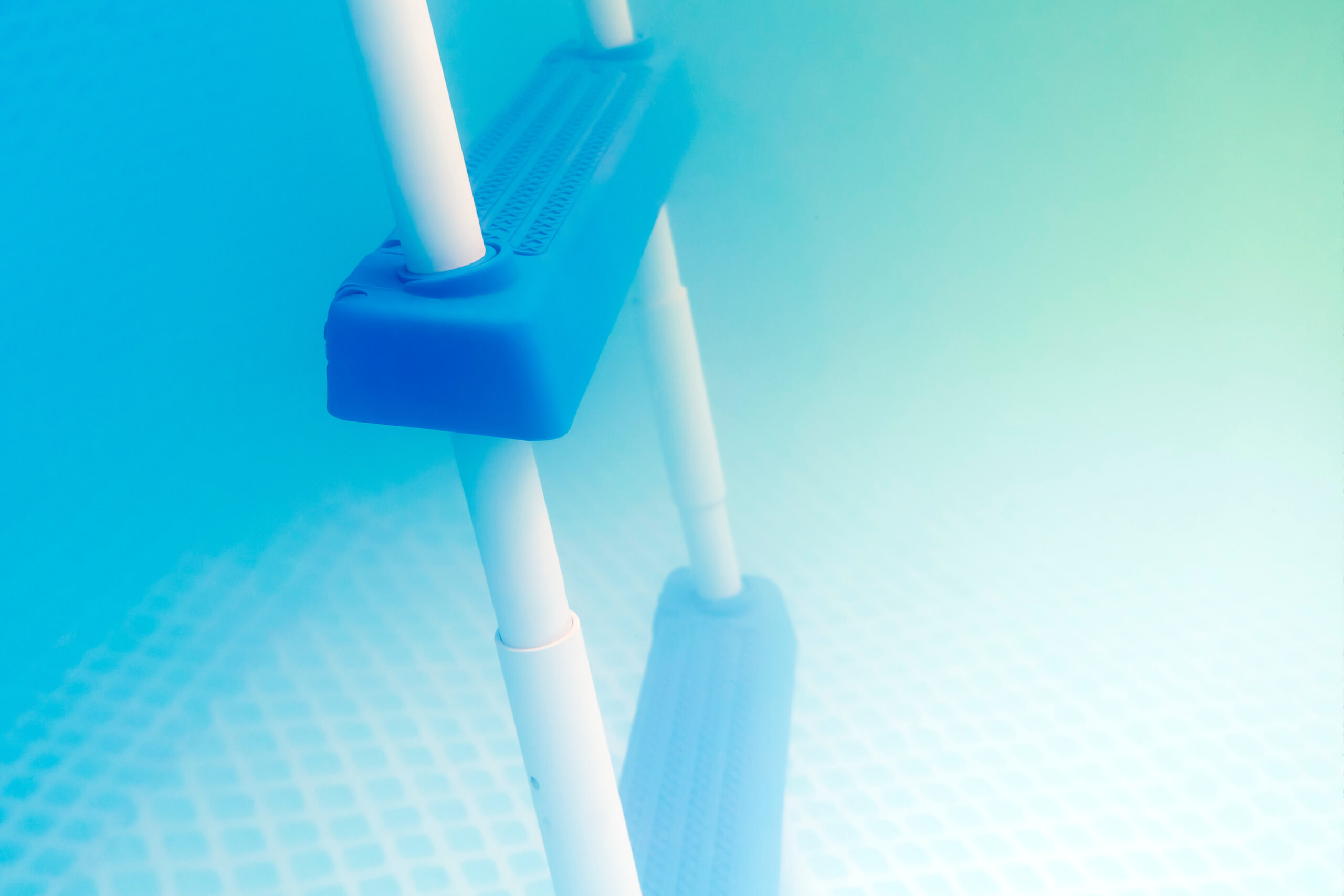When pool water starts to look cloudy, green, or otherwise discolored, it is more than a minor inconvenience. Water that appears milky, foggy, hazy, dull, murky, swampy, chalky, or pea-colored is usually a warning sign of deeper issues in the pool system. For homeowners and professional pool cleaners alike, resolving these visual problems requires a clear understanding of the causes and a deliberate approach to restoring balance.
Unclear or green water often results from the same broad categories of problems: poor filtration, insufficient sanitation, chemical imbalance, or environmental contamination. The way these problems show up may differ, but the underlying principles are the same. The following sections break down the most common reasons why pool water takes on a cloudy or green appearance and provide practical solutions to address them.
Filtration and Circulation Problems
When water is left stagnant or improperly filtered, suspended particles begin to accumulate. These particles scatter light, giving the water a cloudy or murky look. In severe cases, the pool may appear chalky or dense.
Several common mechanical issues can contribute to this:
-
A clogged filter that cannot capture fine debris
-
A pump that is running too few hours per day
-
Broken or improperly sized filter media
-
Poor water movement, especially in dead zones like corners or steps
In most pools, circulation needs to run at least 8 to 12 hours per day during warmer months. Backwashing or cleaning the filter regularly is also essential. If water appears dusty, foggy, or slightly milky, the filter should be inspected first.
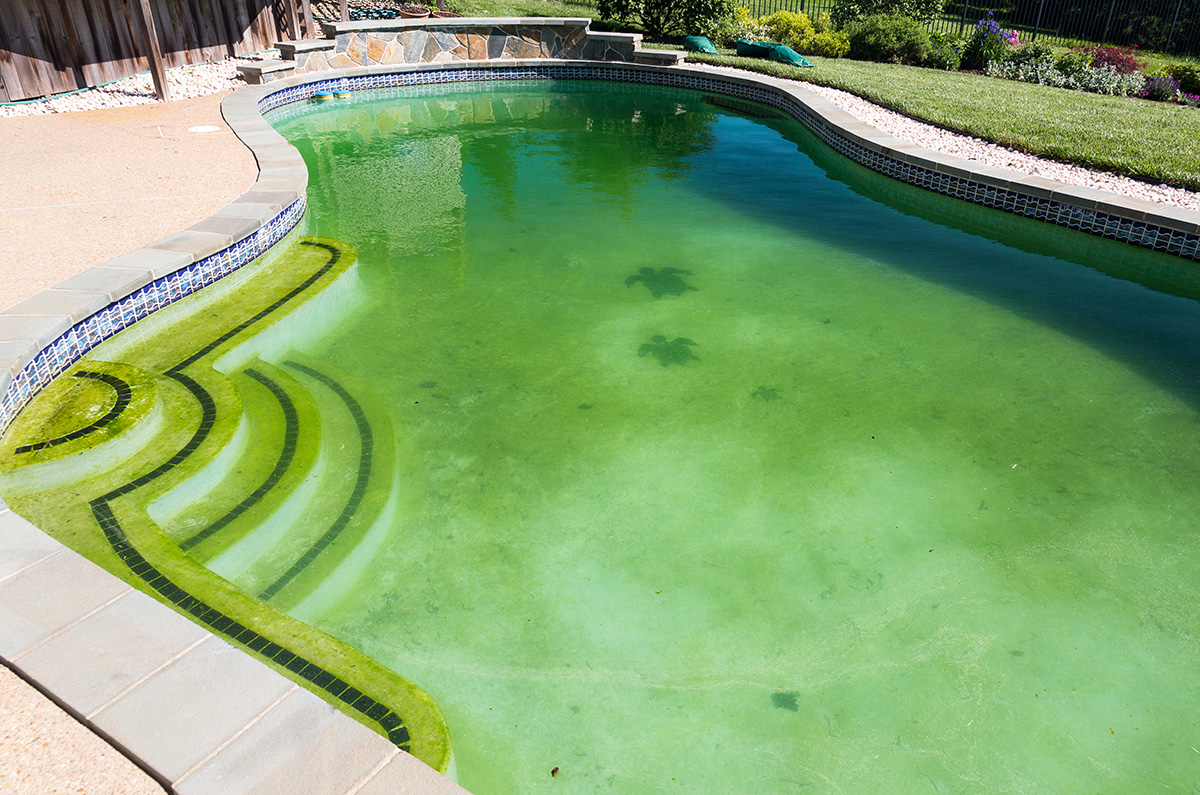
Chemical Imbalance
Chemical levels that are too high or too low often trigger visible changes in water quality. Cloudy or dull water can result from high pH, high alkalinity, or elevated calcium hardness. Green water is often linked to low chlorine or high phosphate levels.
Key points to monitor:
-
pH: If pH is above 7.8, calcium and other dissolved solids may fall out of solution, creating a hazy or powdery appearance.
-
Alkalinity: Levels above 150 ppm can cause poor chlorine performance, allowing microorganisms to thrive.
-
Calcium Hardness: Over 400 ppm can cause clouding, especially when pH is also elevated.
-
Chlorine: When chlorine levels drop below 1 ppm, the water can become a breeding ground for algae and bacteria, leading to green or yellow discoloration.
Water that looks misty, opaque, or blotchy in color is usually suffering from one or more of these imbalances. A complete water test is the only way to identify which levels are off and how to correct them.
Algae Growth
Algae is the most common reason pool water turns green. The green color may be light and pea-like or dark and swampy, depending on how advanced the growth is. Algae spores are introduced through rain, wind, or contaminated swimsuits and equipment. Without sufficient chlorine, they take hold quickly.
Types of algae that affect pool appearance:
-
Green algae: Gives the pool a distinct green or lime hue. Often forms first in corners or on steps.
-
Yellow (mustard) algae: Makes the water look slightly stained or dusty, often mistaken for dirt.
-
Black algae: Does not always affect water color immediately but will cause cloudy conditions over time as debris accumulates.
A pool with a green tint that also feels slippery or has visible patches on surfaces should be treated immediately with a combination of brushing, shocking, and algaecide. Green water that looks thick or swamp-like will likely require multiple shock treatments.
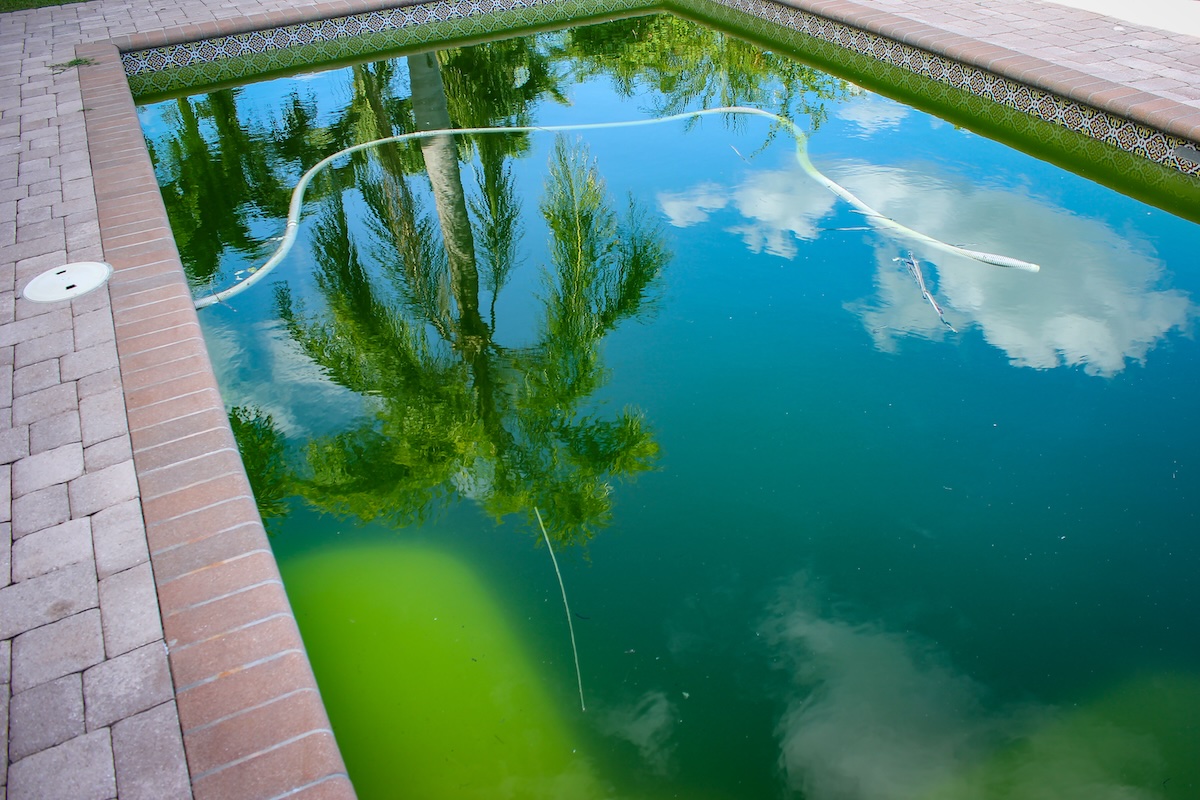
Organic Debris and Contaminants
Leaves, pollen, sunscreen, and body oils introduce organics into the pool that can overwhelm the sanitizer. Even if these do not always cause a green color, they often create hazy or greasy water that looks foggy or discolored.
Some pools may develop a milky or dusty appearance a day or two after a storm or heavy use. This is often the result of combined organic debris and chlorine demand. When chlorine is used up faster than it can be replaced, sanitization drops, and clarity suffers.
Proper skimming, shocking after storms or parties, and maintaining appropriate free chlorine levels can prevent the buildup that leads to these symptoms.
Metals in the Water
If the pool water has a green, brown, or yellow tint that does not respond to chlorine, it may be caused by dissolved metals. Copper, iron, and manganese can enter the water through source water, old pipes, or leaching from pool components. When these metals oxidize, they change color and give the water a stained or dirty look.
Signs of metal problems:
-
Water turns green after shocking, without the presence of algae
-
Stains appear on plaster, especially around fittings or steps
-
Water has a tea-colored or rusty cast even when chemically balanced
Metal sequestering agents can help bind these elements and prevent discoloration, but metals must also be removed from the water over time using specialized filters or water replacement.
Pool Clarifiers and Flocculants: When and How to Use Them
Sometimes, pool water looks foggy or milky even when sanitation and filtration are adequate. This is usually due to microscopic particles that are too small to be trapped by the filter. In these cases, clarifiers or flocculants can help.
-
Clarifiers bind tiny particles into larger ones, making them easier for filters to catch. Use them when water looks lightly hazy or dull.
-
Flocculants bind particles and drop them to the bottom, where they must be vacuumed. Use only when water is very cloudy or dense and regular filtering has failed.
It’s important not to overuse these products, as they can create further imbalance or gum up filters when applied improperly.
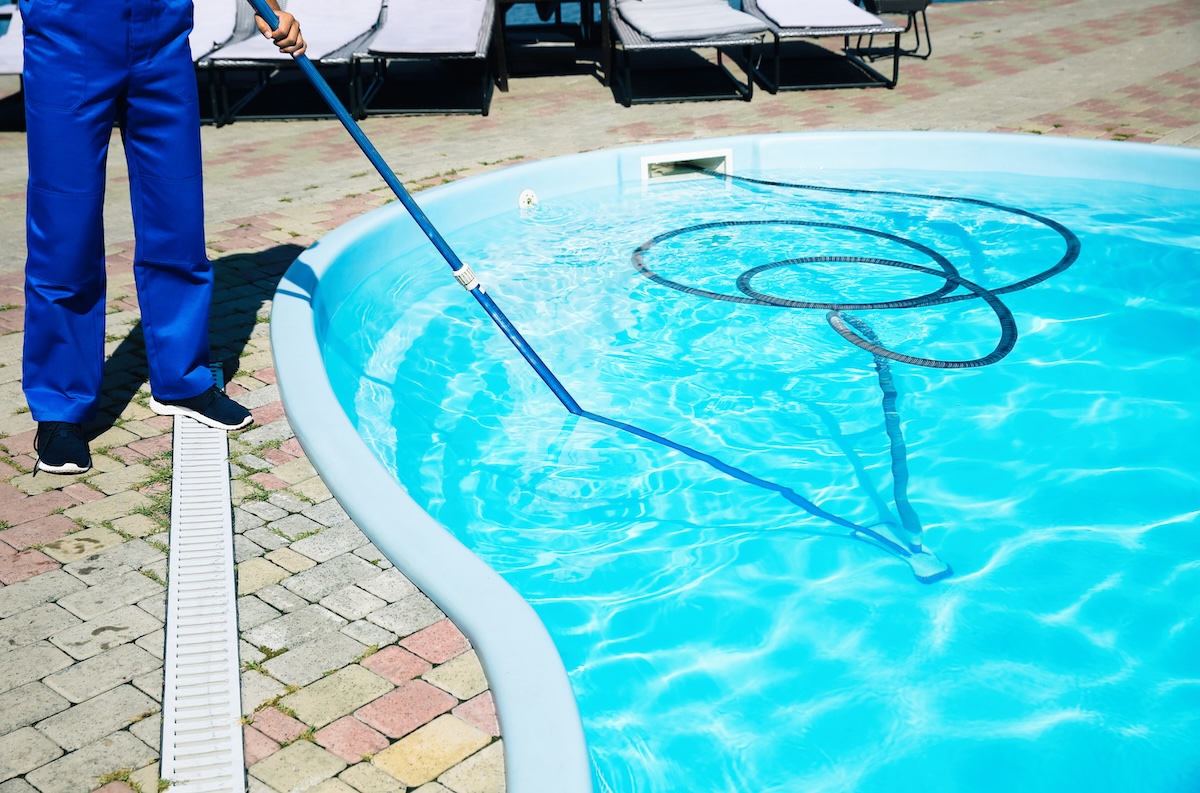
Preventive Maintenance Practices
Once the pool is clear, regular maintenance keeps it that way. Preventive steps reduce the risk of seeing cloudy or green water again, even under heavy use or during changing seasons.
Key actions include:
-
Running the pump long enough each day to cycle all the water
-
Cleaning the filter at the manufacturer-recommended intervals
-
Brushing walls and steps weekly to dislodge algae and debris
-
Testing chemical levels two to three times per week during peak season
-
Shocking the pool weekly or after heavy use
Water that stays balanced, circulated, and properly sanitized is far less likely to become cloudy, hazy, or green.
When to Drain and Refill
In rare cases, no amount of chemical treatment or filtration will fully restore clarity. If total dissolved solids are too high, or if the water contains persistent contamination from past problems, a partial or full drain may be required.
Signs that a drain is necessary:
-
Persistent green, brown, or cloudy water even after multiple treatments
-
Unexplained chemical demand or inconsistent readings
-
Strong odors that do not resolve with shock or filtration
-
High stabilizer levels that prevent chlorine from functioning
For most pools, water should be replaced every three to five years depending on usage, environment, and water quality.
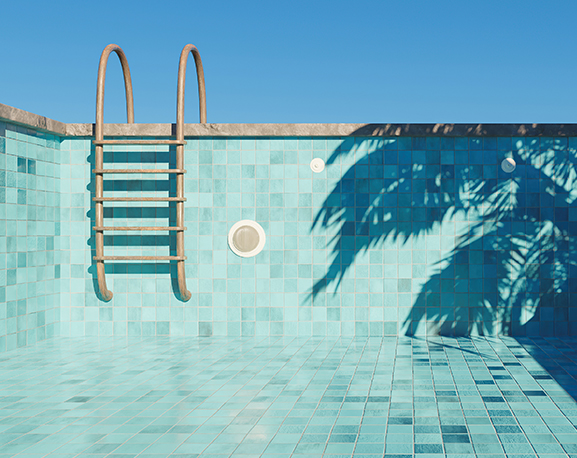
Why Clarity Problems Always Have a Cause
The appearance of cloudy, green, or murky pool water is always the result of something specific. Each visual symptom, such as foggy, milky, chalky, pea-colored, or visibly off water, reflects an underlying issue that can be identified, corrected, and prevented from returning. The most important takeaway is this: no pool ever becomes unclear without a reason. And no issue remains unsolved when it’s approached with the right knowledge, the right tools, and consistent attention to detail.
At Big League Pool Cleaners, we’ve built our name on that exact principle. Based in Las Vegas, we handle every type of water issue the desert throws at backyard pools, from dust-driven cloudiness to algae blooms after heat waves. Our team understands how quickly a small imbalance can turn into a major problem, and we don’t just treat the surface. We get to the cause, correct it, and keep your system running the way it should.
If your pool looks cloudy, green, or anything less than clear, let us take care of it. Contact Big League Pool Cleaners today to schedule your professional service.

